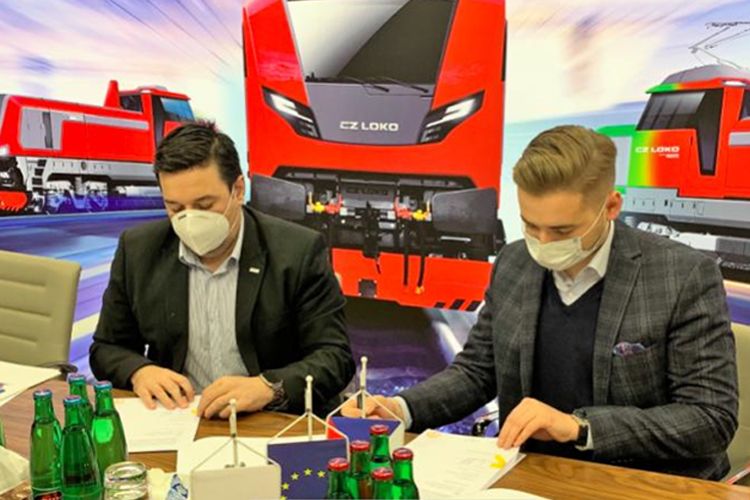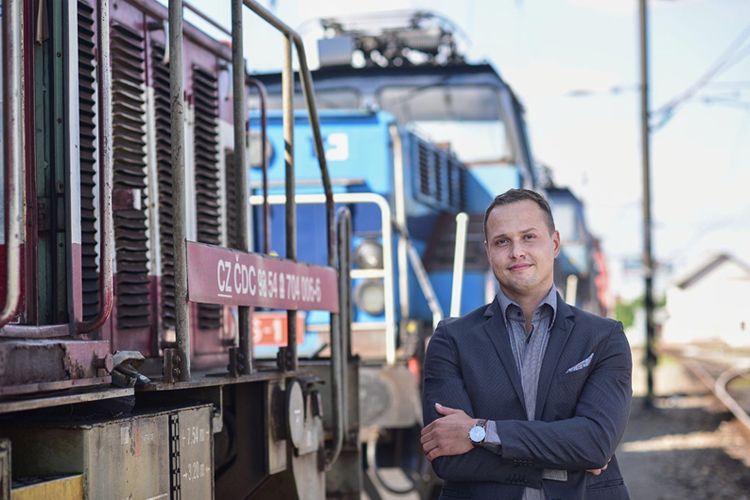- News
- 7 min read
- 177 days ago
Interview with Elena Stancich - Sales Manager South Europe
Elena Stancich shares insights from her personal journey into rail logistics, reveals strategies to overcome resistance to digital platforms, and discusses Italy's strategic position

Could you tell us about your background in the railway industry?
Elena Stancich, RAILVIS.com: My logistics career began about six years ago in a maritime shipping company. After meeting my mentor, who introduced me to the railway industry, I decided to change my professional direction. I found rail logistics fascinating and stimulating, and I’ve been committed to it ever since.
How did you become involved with RAILVIS.com, and what attracted you to this role?
Elena Stancich, RAILVIS.com: After leaving my previous role in shipping, I was looking for new opportunities when I was offered a chance to join RAILVIS.com. At that time, it was still a startup with great potential for growth, and the idea immediately intrigued me. Seeing its possibilities and future prospects, I gladly accepted the offer.
What are your main responsibilities as Sales Manager at RAILVIS.com?
Elena Stancich, RAILVIS.com: My primary responsibility is promoting our services to companies operating within the railway sector. I manage the entire sales process, maintain strong relationships with our clients, search for new business opportunities, and develop strategic partnerships.
How does working remotely from Trieste influence your daily operations and interactions with customers?
Elena Stancich, RAILVIS.com: Trieste’s strategic location plays a significant role in my daily operations. It’s an important hub for logistics and commerce, connected by strong railway links to many of our partners and clients. Working remotely hasn't limited my ability to interact effectively, as digital technologies enable continuous communication and close relationships with customers and colleagues.
Do you see any advantages or challenges in working from Italy while being part of an international team?
Elena Stancich, RAILVIS.com: Working with colleagues from diverse backgrounds and nationalities is one of the most enriching experiences of my career. Rather than difficulties, I see opportunities. Italian culture excels in building personal relationships, which helps us establish lasting trust with clients. Additionally, Italy’s strategic location makes it easier to access European markets, which benefits our international operations.
How does being based in Trieste help you connect with railway companies in Italy and neighboring regions?
Elena Stancich, RAILVIS.com: Trieste is a historical transport and logistics hub. Its location near the borders of Slovenia and Austria is ideal for connecting with railway companies in Italy and surrounding countries. This geographical advantage allows me to operate efficiently and quickly respond to our clients’ needs across Europe.
What are the biggest challenges in selling RAILVIS.com services to railway companies?
Elena Stancich, RAILVIS.com: One major challenge is helping traditional railway companies understand the importance of digitalization. Many are accustomed to conventional methods and can be reluctant to adopt new technology. Introducing innovative digital solutions requires shifting their mindset, which can initially be difficult.
How do you convince traditional railway businesses to adopt a digital marketplace like RAILVIS.com?
Elena Stancich, RAILVIS.com: I demonstrate tangible benefits of RAILVIS.com, emphasizing its ease of use and its potential to streamline operations. Providing real-life examples of companies that have successfully adopted our platform helps reassure potential customers and encourages their transition to digital processes.
Are there specific objections or hesitations you regularly encounter?
Elena Stancich, RAILVIS.com: It’s natural to encounter skepticism, especially regarding investments in seemingly non-essential services. Many traditional railway operators think their existing methods are sufficient. I help them realize that digitalization significantly enhances efficiency and competitiveness, offering advantages beyond traditional processes.
What strategies do you use to demonstrate RAILVIS.com's added value?
Elena Stancich, RAILVIS.com: The platform’s intuitive nature speaks for itself. Instead of complicated sales strategies, I focus on consistent communication, regularly updating clients on new features, successes, and market trends. Staying in touch even with initially skeptical clients builds trust over time. Ultimately, I believe even the most reluctant companies will embrace digitalization—it’s the future of railways.
Which RAILVIS.com products or services do you primarily highlight in your sales efforts?
Elena Stancich, RAILVIS.com: I always start by listening to the client to fully understand their business and specific needs. This approach enables me to propose tailored solutions from our platform. Customized presentations that directly address a client’s requirements have proven most effective.
Do you see greater interest from wagon owners, railway operators, or forwarders?
Elena Stancich, RAILVIS.com: We see strong interest across all sectors, including wagon owners, railway operators, and freight forwarders. RAILVIS.com provides valuable solutions applicable to each segment, which is why interest is evenly spread among these groups.
Are there features of RAILVIS.com particularly appealing to the Italian market?
Elena Stancich, RAILVIS.com: Italian companies highly value the platform’s simplicity and speed in accessing and analyzing critical information. These features enable effective management and decision-making in today’s increasingly globalized environment. RAILVIS.com helps companies optimize operations, making it especially attractive to the Italian market.
How important is digitalization in enhancing railway companies' efficiency?
Elena Stancich, RAILVIS.com: Digitalization offers remarkable opportunities to enhance operational efficiency, cut costs, and accelerate processes. Platforms like RAILVIS.com simplify resource management, optimize daily operations, and enable companies to quickly and securely connect with partners across Europe. Thus, digitalization is not merely about modernization; it is essential for staying competitive.
How would you describe the current state of Italy’s railway market?
Elena Stancich, RAILVIS.com: The Italian railway market is evolving rapidly, with increased interest in freight rail transport. Investments in infrastructure and digital solutions aim to improve efficiency and competitiveness, reflecting positive developments in the sector.
What are the biggest challenges and opportunities for railway companies in Italy?
Elena Stancich, RAILVIS.com: The main challenges include international competition, compliance with European regulations, and infrastructure modernization. However, opportunities lie in rising demand for freight transport and the chance to significantly enhance operational efficiency through digital technologies.
How competitive is Italy’s railway sector compared to other European countries?
Elena Stancich, RAILVIS.com: Italy's railway sector is competitive, though there's room for improvement in areas like speed, capacity, and digital infrastructure. Countries investing heavily in modernizing their railway networks currently have an advantage, but Italy is actively addressing these gaps.
Do regulatory or infrastructure issues significantly impact Italian railway companies?
Elena Stancich, RAILVIS.com: Yes, bureaucracy and complex regulations can slow operations. Additionally, certain railway infrastructure needs modernization to enhance service reliability and speed, creating some operational hurdles.
How do Italian companies perceive digital solutions compared to traditional methods?
Elena Stancich, RAILVIS.com: Italian companies, particularly traditional ones, still exhibit some skepticism toward digital platforms. However, interest in tools like RAILVIS.com is growing steadily as companies begin recognizing advantages in efficiency, time savings, and market transparency.
Which trends will shape the Italian railway industry in the coming years?
Elena Stancich, RAILVIS.com: Digitalization, sustainability, and automation will significantly influence future trends. Additionally, reducing CO2 emissions and promoting rail as an eco-friendly alternative to road transport will become increasingly important in shaping the industry's future direction.
Related articles
- Cooperations
- 1 min read
CZ LOKO EASYRENT will be newly available on the RAILVIS.com platform
CZ LOKO will start leasing its locomotives thanks to the RAILVIS.com service, a new pan-European reservation and ordering system for available railway vehicles.
- News
- 1 min read
Ctirad Klimánek joins the team of RAILVIS.com as Managing Partner
The RAILVIS.com team acquired a considerable reinforcement, Mr. Ctirad Klimánek brings his long-time international experience and successes in the field of rail freight to the innovative rail platform.
- News
- 1 min read
RAILVIS.com makes its footprint in Switzerland - SBB Cargo AG and ChemOil Logistics are new members of the platform
SBB Cargo (National Swiss Railways) and its daughter – ChemOil Logistics joined the platform RAILVIS.com.


